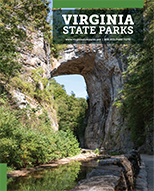Read Our Blogs
The Shad Season Has Arrived!
It is one of the most important events of the season in the Chesapeake Bay region, anadromous fishes that spend most of their adult lives in the ocean return to the tidal freshwater rivers to spawn. As they make their way upstream, predators from channel catfish to ospreys gorge themselves on the nutrient-rich flesh and roe (egg sacks).

Osprey aren't the only shad lovers
Among these fish are the American and Hickory Shad. Shad have been a part of the Virginia diet since the pre-Colonial period. Even today, Mattaponi and Pamunkey Indians harvest this fish as a part of their income. They also help in the restoration of these species with hatcheries on both reservations on the York River's two main tributaries named for these Native American tribes.
"Shad Plankings" have been held by civic and social organizations for decades (the one in Wakefield is the Mecca for Virginia politicians). The shad are scaled, cleaned, and cooked on a board (plank) near an open fire. The fish are also packed in dry salt and brine to keep for over a year without refrigeration. Some people don't mind picking the bones and prefer shad fried or smoked (the best method, in my opinion). But, for those who don't want to go through the trouble, baked shad is a flavorful, bone-free alternative. Roe is often broiled or baked with a generous wrapping of bacon.

Shad says "springtime" in my house
Anglers catch shad with flies, tiny shad dart jigs, and sometimes bare gold hooks. But, they are illegal to possess. Some bait & tackle shop sell the fish as bait for catfish. Fresh shad and roe can be found in fish markets from now until mid-April for those who want to try their hand at cooking. Or, check the newspapers and websites in the region for the nearest planking.
I think fish lovers will enjoy a delicious shad dinner. Of course, large catfish can be caught and kept from the pier at Croaker Landing. Don't be surprised to see the osprey and bald eagles with these fish in their talons along the shore of York River State Park.
Directions to York River State Park: From I-64, take the Croaker Exit 231B. Go north on Route 607 (Croaker Rd.) for one mile, then right on Route 606 (Riverview Rd.) about one and a half miles to the park entrance. Take a left
If you have read the article and have a question, please email nancy.heltman@dcr.virginia.gov.














